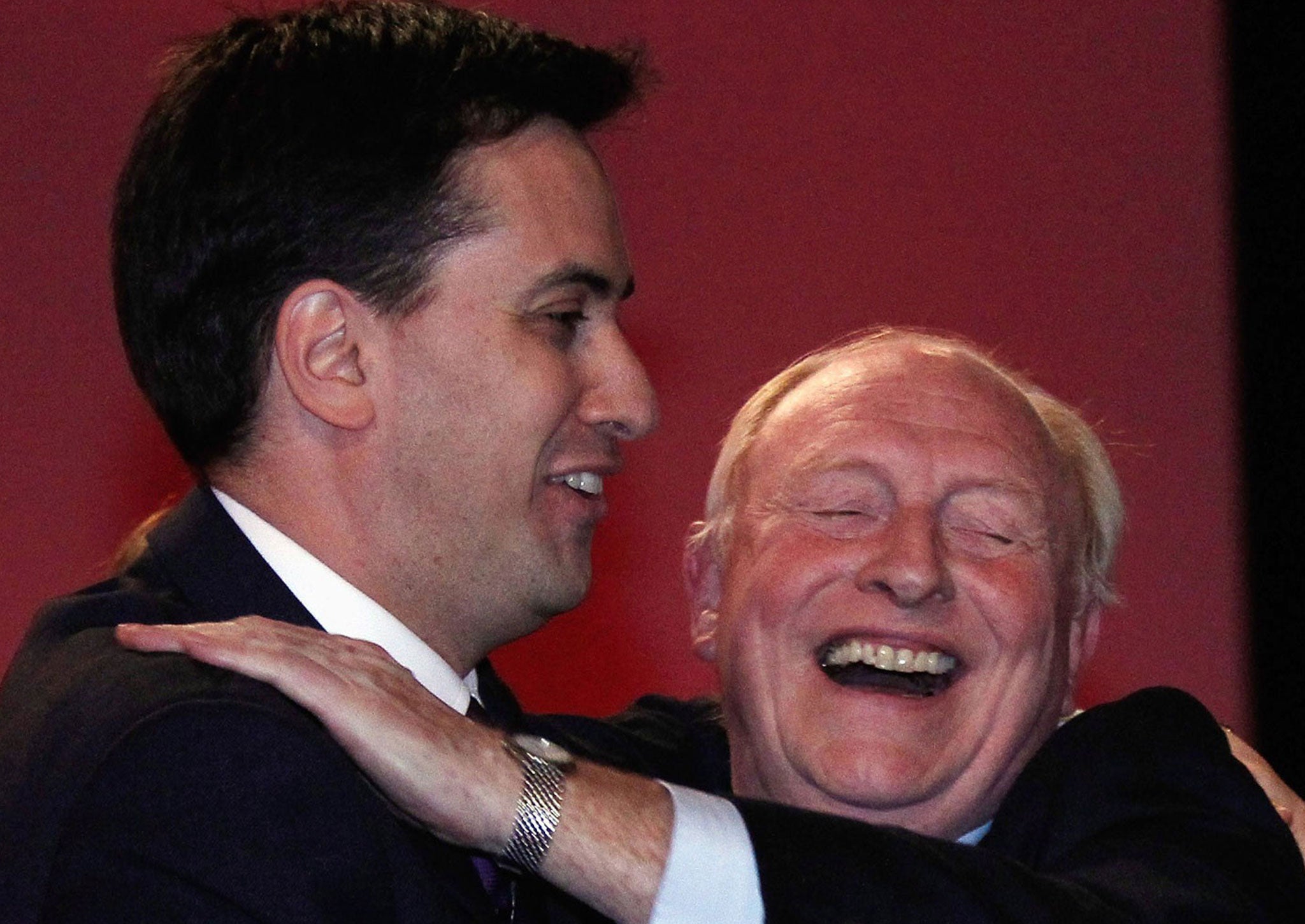The Tories plan to see off Red Ed with the same nasty tactics they used on Kinnock
Worryingly for Miliband, it is no longer only Tories who look back 22 years


The Conservatives retained power with a ruthless attack on Labour’s leadership and tax plans, aided by a nasty campaign against the leader by right-wing newspapers who portrayed him as a dangerous leftie.
There was no great love for the Tories, but their Prime Minister won some respect and the general election turned on fear of Labour and distrust of the Opposition leader.
This happened in 1992. And it is precisely the campaign script the Tories are writing for May next year.
David Cameron, who cut his political teeth as a youthful Tory HQ aide at the 1992 election, talks openly about re-running the campaign, which saw the underdog John Major, who was behind in the opinion polls, defeat Neil Kinnock and win a majority of 21. “He faced a Labour politician who wanted to tax more, spend more and borrow more, and I am facing a politician who wants to tax more, spend more and borrow more,” Mr Cameron said last November.
Like 1992, next year’s election will be close, with a hung parliament the most likely outcome. A similar six-week campaign is planned by the Tories and may again prove decisive.
Not everything is the same. In 1992, the economy was in recession rather than recovering. But the unfinished economic business worked against Labour, whose “time for change” message was deemed too risky. Ed Miliband’s “big reforms” mantra may suffer the same fate – even though, with a deficit to clear, he insists it will not mean “big spending”. Another handicap for Mr Miliband is that many voters have a settled view – wrongly – that the Coalition’s austerity measures were needed because of the mess left by Labour rather than from a global crisis.
Worryingly for Mr Miliband, it is no longer only Tories who look back 22 years. As then, Labour MPs think their best hope is to be the largest party in a hung parliament; few believe Labour will win the overall majority suggested by today’s polls. One Miliband loyalist in the Shadow Cabinet told me: “The next 10 months will tell whether we are on a glide path to another 1992 election.”
The Tories described their 1992 campaign as “leadership and tax”. The “double whammy”, in their crude but effective posters, was more tax and higher prices under Labour. Next year, it will be more tax and higher borrowing.
Labour has tried to insulate itself by promising to stick to the Coalition’s day-to-day spending plans for 2015-16. But it is open to the higher borrowing charge because it plans to spend more on housebuilding and infrastructure projects, and to balance the nation’s books by 2020 rather than 2017-18.
Mr Miliband’s personal ratings are very poor. As with Lord Kinnock in 1992, many voters do not see him as a prime-minister-in-waiting. The Tories leave it to their media allies to portray him as weird – and Mr Miliband sometimes hands them ammunition. I suspect younger people are less worried about his geekiness and would prefer him to be himself rather than pretend to be another plastic politician. But he will need to persuade them to bother to vote, which may prove an uphill struggle.
A more dangerous charge is that he is weak and indecisive, and therefore not up to being PM. He does believe in consulting widely, sometimes too widely. But he has shown strength and decisiveness at crucial moments, notably in taking on Rupert Murdoch over phone hacking in a way few politicians would have dared. More of the same is needed.
The parallels with Lord Kinnock are not as favourable as the Tories imagine. Lord Kinnock bravely modernised his party, preparing the ground for Tony Blair to complete the job. But he was weighed down by his own left-wing baggage, stranded in a no man’s land between Old and New Labour.
For all his presentational problems, Mr Miliband is more comfortable in his own skin. When he says he wants big economic reforms to ensure that growth brings prosperity for all, it’s not just another slogan. He really means it.
Allies hope “authenticity” could be his strongest suit. His aides will try to turn the presidential battle into one between Identikit PM Cameron with perfect soundbites and photo-ops, but flexible principles and no defining purpose, and a Labour leader who has stuck to his principles through thick and thin.
Despite the increasing gloom on the Labour benches, Mr Miliband still has a chance – and not least because the electoral map favours Labour. We will know a lot more about his project and the “big choice” facing the country at the Labour conference in September. By then, Mr Miliband must finally resolve the biggest dilemma of his leadership: the precise balance between being “radical” and “credible.”
An impressive, radical blueprint is on his desk –last month’s Condition of Britain report by the IPPR think tank. But Jon Cruddas, Labour’s policy chief, who was closely involved in the project, fears Mr Miliband will leave most of it on his shelf, adopting the more cautious approach urged by Ed Balls, the shadow Chancellor, and Douglas Alexander, the party’s election chief.
The tough choices that Mr Miliband now has to make will determine whether he suffers the same fate in 2015 as Lord Kinnock in 1992.
Will Nick Clegg get a second chance?
Nick Clegg told David Cameron he was wrong to give his spin doctor Andy Coulson a “second chance” after he resigned as News of the World editor over accusations of phone hacking. Mr Cameron brushed Mr Clegg’s 2010 warning aside and installed Mr Coulson as Downing Street’s communications director.
Ironically, I hear that Mr Clegg’s election strategy will be to ask voters to give him a “second chance”. Admittedly. the context is different. He hasn’t committed a criminal offence, although some voters will not forgive the symbolic broken promise on tuition fees or entering the Tory-led Coalition in the first place.
“We will ask people to take a second look,” one senior Liberal Democrat told me. “There will be voters who don’t like David Cameron or Ed Miliband. We will remind them that Nick is still standing, despite everything that has been thrown at him. We hope that he may yet earn some respect for helping to rescue the economy.”
The Lib Dems will also shout more loudly about the policies they have been instrumental in bringing in since 2010. Their worry is that voters only know about one – the £10,000-a-year personal tax allowance. And Mr Cameron and George Osborne are trying to steal that. Tricky.

Join our commenting forum
Join thought-provoking conversations, follow other Independent readers and see their replies